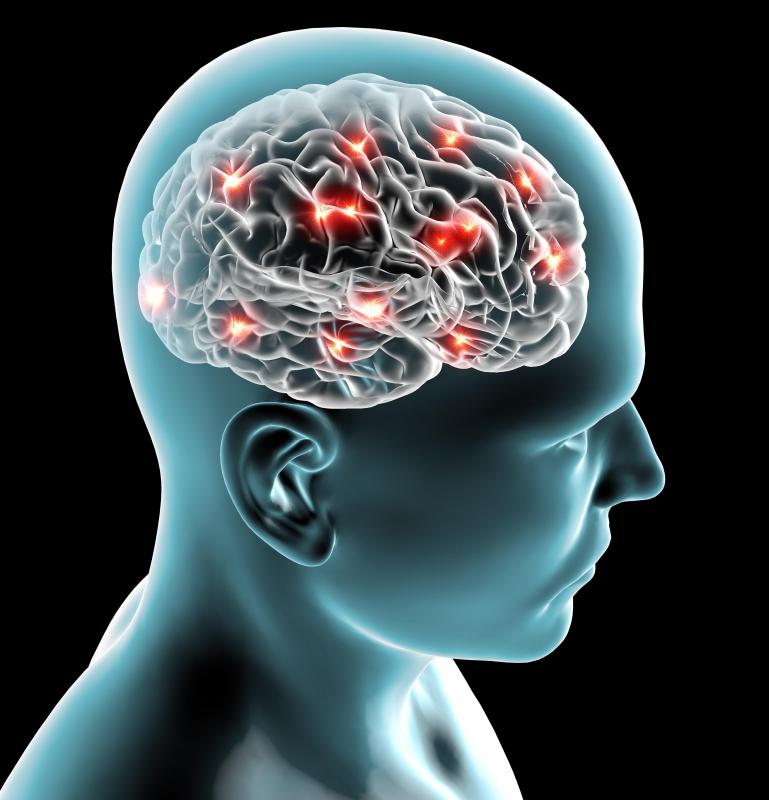At TheHealthBoard, we're committed to delivering accurate, trustworthy information. Our expert-authored content is rigorously fact-checked and sourced from credible authorities. Discover how we uphold the highest standards in providing you with reliable knowledge.
What Are the Different Basal Ganglia Diseases?
The basal ganglia is a collection of nuclei in the brain responsible for control of voluntary movement and the execution of learned tasks. Damage to this area of the brain causes problems with motor tasks and uncontrolled body movements. This harm can be caused by trauma, but is more likely to occur as a result of a disease or disorder of the brain. The primary basal ganglia diseases are Parkinson's disease, tardive dyskinesia, Hemiballismus and Huntington's disease.
Parkinson's disease is a type of hypokinetic disorder, meaning it causes decreased motor control and speed of movement. This disorder is a result of low levels of dopamine in the basal ganglia. Characteristics of Parkinson's include tremors, rigidity, slow movement, a shuffling walking pattern, and depression.

Other than Parkinson's, basal ganglia diseases are hyperkinetic disorders. Due to decreased activity in the basal ganglia, movement control is impacted and uncontrollable movements result. These movements can be in the form of tremors, jerking limb motions, or rapid alternating muscle movements.
Tardive dyskinesia is caused by problems with the dopamine receptors in the basal ganglia. The receptors become overly sensitive to dopamine, leading to uncontrolled muscle movements. Such movements are most commonly seen in the muscles of the face. Hemiballismus is characterized by involuntary movements on only one side of the body.

One of the most debilitating of the basal ganglia diseases is Huntington's disease. This disorder is hereditary and causes significant issues with speech, movement, cognition and behavior. Limb activity is jerky, and speech production gradually declines. The disease is progressive and will ultimately result in death.
There is some evidence to suggest that Tourette syndrome may be, at least partially, caused by problems in the basal ganglia. Interruptions in the neural circuits of the basal nuclei may cause the uncontrollable tics and outbursts associated with this disorder. Similarly, some types of obsessive compulsive disorder may be a result of dysfunction in this area of the brain. Research into these disorders and their relationship to the basal ganglia began in the late 20th century, but has lead to the development of new forms of treatment for the conditions.
Studying basal ganglia diseases is an excellent means to discovering more about this complex area of the brain. Over activity of the basal nuclei can lead to hypokinetic movements that are difficult to initiate, while under activity can result in rapid, uncontrollable movements. Gaining an improved understanding of why changes in activity occur may hold the key to the treatment of the different basal ganglia diseases.
AS FEATURED ON:
AS FEATURED ON:












Discuss this Article
Post your comments